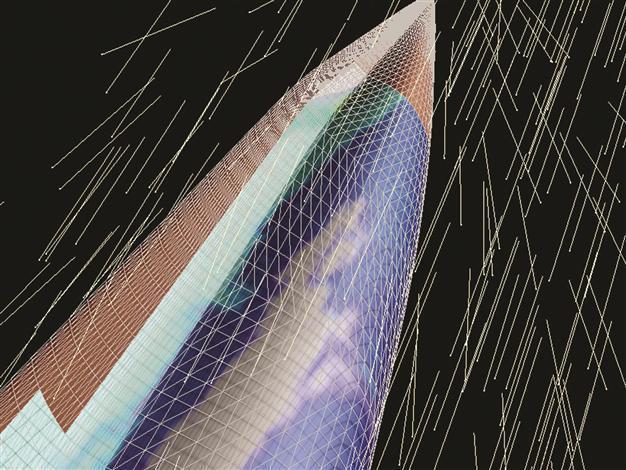US hypersonic rocket plane may fly by 2016
WASHINGTON

This picture obtained from DARPA’s website shows a projection of a hypersonic plane.
The U.S. military aims to fly a full-scale rocket plane at 20 times the speed of sound by 2016, officials announced last week.The Defense Advanced Research Projects Agency (DARPA) laid out its plan to develop and test the hypersonic vehicle in a press release issued on July 13. The so-called X-plane would travel at Mach 20, roughly 13,000 mph (20,900 kph), allowing the military to reach any spot on the globe in less than an hour. The vehicle would also be “recoverable,” according to the release, meaning the government could get it back. To help make all this happen, DARPA has started a new program called Integrated Hypersonics (IH). IH will build off of previous Defense Department research into ultrafast flight but will need to make some major strides of its own, officials said. DARPA wants to build the recoverable rocket-powered hypersonic aircraft by 2016.
“We do not yet have a complete hypersonic system solution,” said Gregory Hulcher, director of strategic warfare at the Office of the Under Secretary of Defense for Acquisition, Technology and Logistics, in a statement. “Programs like Integrated Hypersonics will leverage previous investments in this field and continue to reduce risk, inform development and advance capabilities.” The IH program will focus primarily on five areas: thermal protection; aerodynamics; guidance, navigation and control (GNC); range and instrumentation; and propulsion.
Thermal protection system
Thermal protection systems are a key requirement for hypersonic flight, which is traditionally defined as anything above Mach 5. Vehicles zooming through the atmosphere at Mach 20 experience temperatures in excess of 3,500 degrees Fahrenheit (1,927 degrees Celsius), DARPA officials said, hot enough to melt stainless steel.
The desired advances in aerodynamics and GNC technology will allow the X-plane to make real-time, in-flight adjustments to account for changing conditions – such as wind gusts – and let it glide safely to its destination. As far as propulsion goes, IH won’t simply adapt an existing rocket designed for space missions.
















